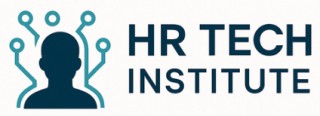
Understanding Applicant Tracking Systems
In today's fast-paced business landscape, organizations are continually seeking efficient ways to streamline their recruitment processes. Central to this endeavor is the adoption of Applicant Tracking Systems (ATS). These systems have emerged as indispensable tools for hiring managers and recruiters alike, simplifying what was once a labor-intensive process.
An ATS is essentially a digital platform designed to aid employers in managing the hiring process by tracking job applicants from start to finish. From the initial application to the final decision, these systems offer a comprehensive solution that enhances the overall candidate experience. They play a pivotal role in ensuring that top talent does not slip through the cracks, a common challenge in the quest for effective talent acquisition.
Recruitment is increasingly driven by data, and the ATS serves as the central repository for this purpose. It not only tracks applicants but also gathers and manages a vast array of candidate information. By integrating with job boards and social media platforms, ATS platforms can efficiently sort through large volumes of applications, making it easier for recruiters to assess potential hires and schedule interviews.
For HR professionals seeking to navigate these modern tools, understanding the intricacies of ATS platforms is crucial. Whether you're exploring campus recruiting strategies or adopting tracking systems within your organization, these digital systems are key to staying competitive in the talent market. To delve deeper into the role of such systems, you might find valuable insights in this in-depth guide on campus recruiting software.
The Importance of Digital Record Keeping
The Crucial Role of Digital Record Keeping in Modern Recruitment
In today’s digital age, where the recruitment process is becoming increasingly dependent on technological advancements, the role of digital record keeping stands out as more critical than ever. Applicant tracking systems (ATS) are at the forefront of this transition, revolutionizing how hiring managers and recruiters maintain records of candidates. First and foremost, digital records streamline the entire recruitment process. Gone are the days of sifting through piles of paper resumes. Now, with the help of digital platforms, candidate information is easily accessible, allowing recruiters to focus on finding the top talent efficiently. Additionally, digital records simplify the tracking process. Every stage of the hiring process, from initial job application to final interview scheduling, is meticulously documented. This not only helps in keeping a detailed history of each applicant’s journey but also aids in enhancing the candidate experience by ensuring seamless communication. Furthermore, in compliance with data protection regulations, having a reliable system that stores candidate data securely is paramount. Modern tracking systems enable this while also offering insights into talent acquisition trends and candidate preferences. This capability empowers employers to establish stronger employer branding and tailor their recruitment strategies accordingly. An emerging trend highlighted in discussions around ATS adoption among employers in major hubs like Denver indicates a growing awareness of these benefits. Insights into such patterns can be explored further here. As recruitment strategies continuously evolve, the push towards a completely paper-free process becomes clearer. The efficiency and accuracy offered by digital records not only enhance the overall operational workflow but ensure that the decision-making process is based on comprehensive, data-driven insights. Consequently, this strengthens the alignment between recruitment goals and organizational objectives, making digital records an indispensable asset in today’s competitive landscape.How ATS Store and Manage Candidate Data
The Role of Applicant Tracking Systems in Maintaining Candidate Data
Applicant Tracking Systems (ATS) play a crucial role in the seamless management of candidate data throughout the recruitment process. These systems act as the digital backbone of modern recruitment, facilitating streamlined hiring experiences for both recruiters and candidates. Data management within ATS platforms begins at the initial stage of the hiring process when candidates submit their applications on job boards or the company's career site. As these applications flood in, ATS automatically captures vital information, such as resumes, cover letters, and relevant candidate details. This inbound data is effectively organized, stored, and readily accessible in centralized digital records, eliminating the traditional clutter of paper-based records. Recruiters often leverage these stored digital records to track candidate histories, ensuring swift retrieval of pertinent information when planning interview schedules or evaluating potential talent for future openings. By maintaining comprehensive digital records, ATS platforms provide recruiters with a detailed view of a candidate’s progression through the recruitment journey, from initial application to potential interviews and beyond. A significant advantage of ATS in the recruitment ecosystem is its integration with other digital platforms, such as social media and employer branding tools. This integration enhances the ability to nurture top talent and improve the candidate experience. Moreover, as hiring managers search for candidates who align with organizational goals, having a robust digital record efficiently highlights the strengths and experiences of applicants. To ensure that candidate data is efficiently managed and easily accessible, leading ATS platforms continuously innovate their capabilities. The ongoing advancements in these systems pave the way for improved talent acquisition strategies, making them indispensable tools in the quest to hire top talent. For more insights on the power of talent mapping in HR tech, explore further resources that delve deeper into these innovative practices.Benefits of Digital Records in Recruitment
The Advantages of Keeping Recruitment Data Digitally
The adoption of digital records in recruitment processes, powered by Applicant Tracking Systems (ATS), offers a host of benefits that can elevate the efficiency and effectiveness of hiring. By maintaining a comprehensive digital record, recruiters and hiring managers can significantly enhance their recruitment strategies.
Improved Organization and Accessibility
Digital records ensure that candidate information is organized systematically within the ATS platforms, where recruiters and hiring managers can easily access and retrieve data whenever needed. This seamless storage solution reduces the time spent on manually sorting through paperwork, allowing for a more streamlined recruitment process.
Enhanced Candidate Experience
By managing candidate data digitally, ATS makes it easier for recruiters to tailor communication and engagement strategies, ultimately fostering a positive candidate experience. Prospective job seekers benefit from timely updates on their application status, interview scheduling, and feedback, contributing to improved employer branding.
Facilitates Effective Decision-making
ATS systems provide valuable insights into recruitment metrics by tracking the entire hiring process, from sourcing candidates through job boards and social media to the final interview stages. Recruiters can leverage this data to make informed decisions on talent acquisition strategies, ensuring that only top talent is considered.
Cost and Time Efficiency
Utilizing an ATS to maintain digital records helps organizations go paper free, thereby reducing administrative costs and environmental impact. Automation features also speed up the recruitment process, allowing teams to focus more on strategic activities rather than manual data entry.
By leveraging ATS, organizations not only improve their operational efficiency but also set themselves apart in competitive talent markets. Addressing traditional challenges in record keeping, these systems have become indispensable tools in modern recruitment processes.
Challenges in Digital Record Keeping
Overcoming Hurdles in Digital Record Keeping
While the adoption of digital records in recruitment offers numerous advantages, there are significant challenges that organizations face. Understanding and addressing these obstacles can lead to more effective utilization of applicant tracking systems (ATS) and enriched candidate experiences. Firstly, one of the major challenges is the integration of ATS platforms with existing systems within an organization. Many companies rely on multiple software solutions for different functions such as interview scheduling, social media management, or job boards interaction. Ensuring all of these platforms communicate seamlessly can be a daunting task and often requires custom software development or purchasing additional integration tools. Secondly, data security and privacy concerns loom large over the digital record-keeping process. With sensitive candidate information stored digitally, maintaining secure storage practices and complying with data protection regulations like the GDPR is vital. Breaches can not only damage an organization's employer branding but also lead to legal repercussions. Recruiters and hiring managers also frequently encounter challenges related to the quality and accuracy of digital records. Applicant tracking systems must be equipped with sophisticated tracking capabilities to ensure information is up-to-date and relevant. Errors or outdated records can affect the recruitment process, delaying or missing top talent. Furthermore, user adaptability and training present hurdles. For many recruitment professionals, transitioning from traditional paper processes to digital systems requires a cultural shift and dedication to learning new technologies. Providing comprehensive training and support can ease this transition and promote a more efficient hiring process. Lastly, while a paper-free environment is the goal, shifting to digital records can sometimes lead to an overwhelming amount of data. This influx can burden the systems if not managed correctly, necessitating effective data management strategies. While there are challenges, addressing these provides an opportunity for innovation and improvement in how recruitment processes are managed, ultimately enhancing talent acquisition efforts.Future Trends in ATS and Digital Record Keeping
Anticipating Tomorrow's Applicant Tracking Systems
As we look toward future trends in Applicant Tracking Systems (ATS), it’s clear that these digital platforms will continue to advance, offering enhanced capabilities that go beyond conventional recruitment practices. Let's explore some emerging trends poised to shape the future of ATS and digital record keeping.- AI and Machine Learning Integration: The integration of artificial intelligence and machine learning algorithms into ATS platforms is revolutionizing how recruitment is conducted. These technologies enable more efficient data processing and offer predictive analytics, helping hiring managers identify top talent with greater accuracy. The use of AI in sentiment analysis is also enhancing candidate experience by providing more personalized interactions.
- Enhanced Data Security Protocols: As digital records become the backbone of recruitment processes, safeguarding candidate information is paramount. Future ATS are expected to introduce advanced security protocols to protect sensitive data, ensuring compliance with privacy regulations and building trust with candidates.
- Improved User Experience: User-centric design will take precedence as systems strive to simplify the recruitment process for both recruiters and applicants. This includes intuitive interfaces, seamless job board integrations, and efficient interview scheduling tools, all aimed at creating a streamlined experience from application to interview.
- Social Media Integration: With the increasing influence of social media in employer branding and talent acquisition, ATS platforms are embedding functionalities that allow recruiters to engage candidates across digital channels more effectively. This evolution helps in reaching a broader pool of candidates while promoting organizational culture.
- Automation and Infrastructure: Automation will continue to play a key role, driving efficiency and precision in steps like resume parsing, interview scheduling, and conducting preliminary assessments. Coupled with robust IT infrastructure, ATS systems are gearing towards a paper-free recruitment process that not only saves time but also aligns with sustainable practices.












